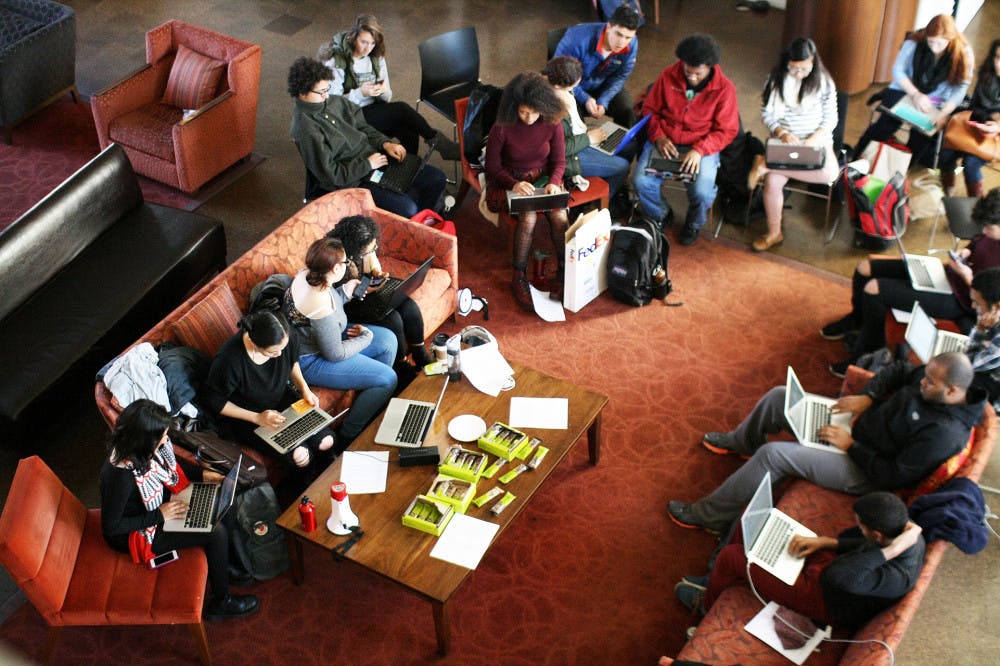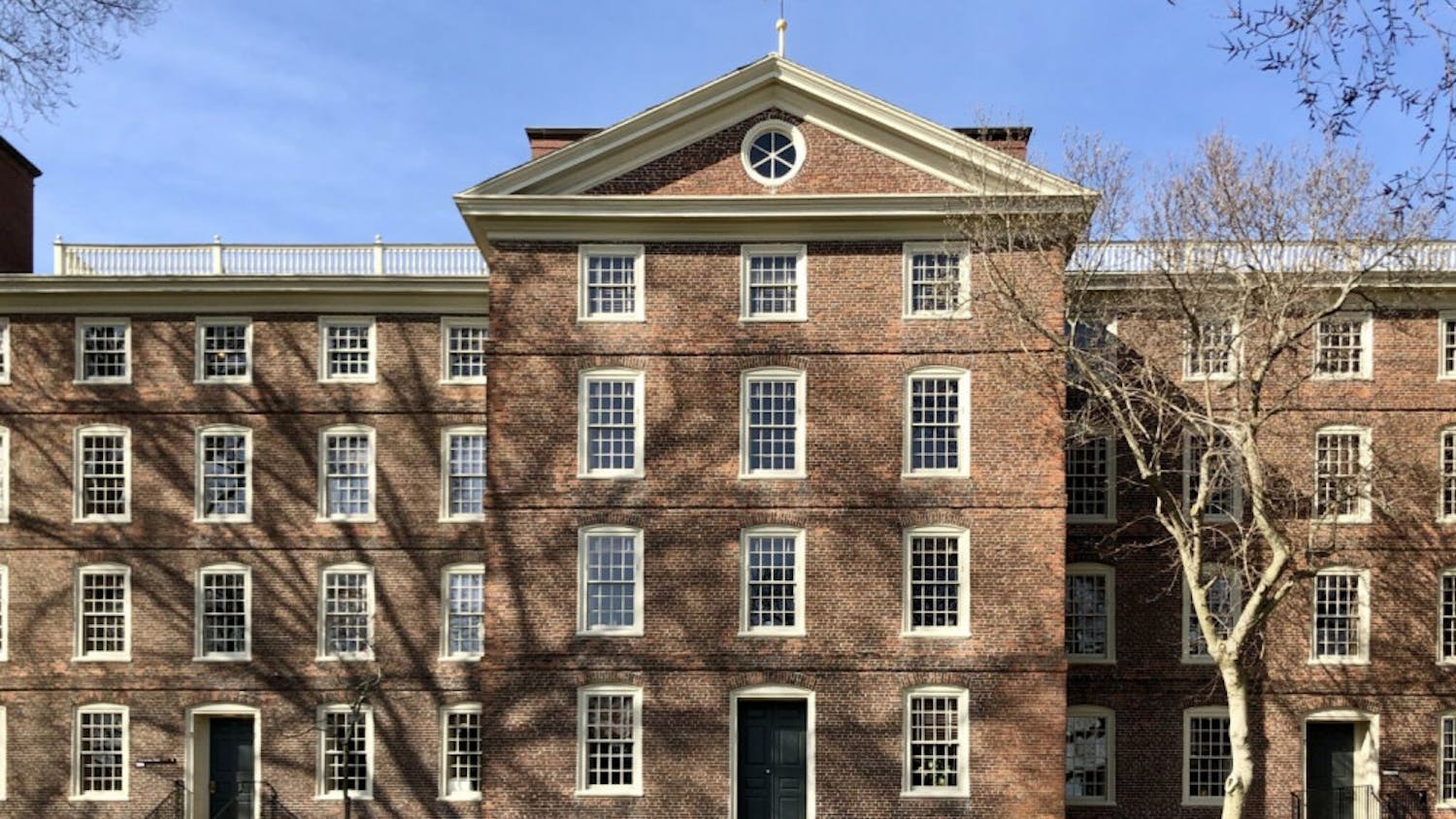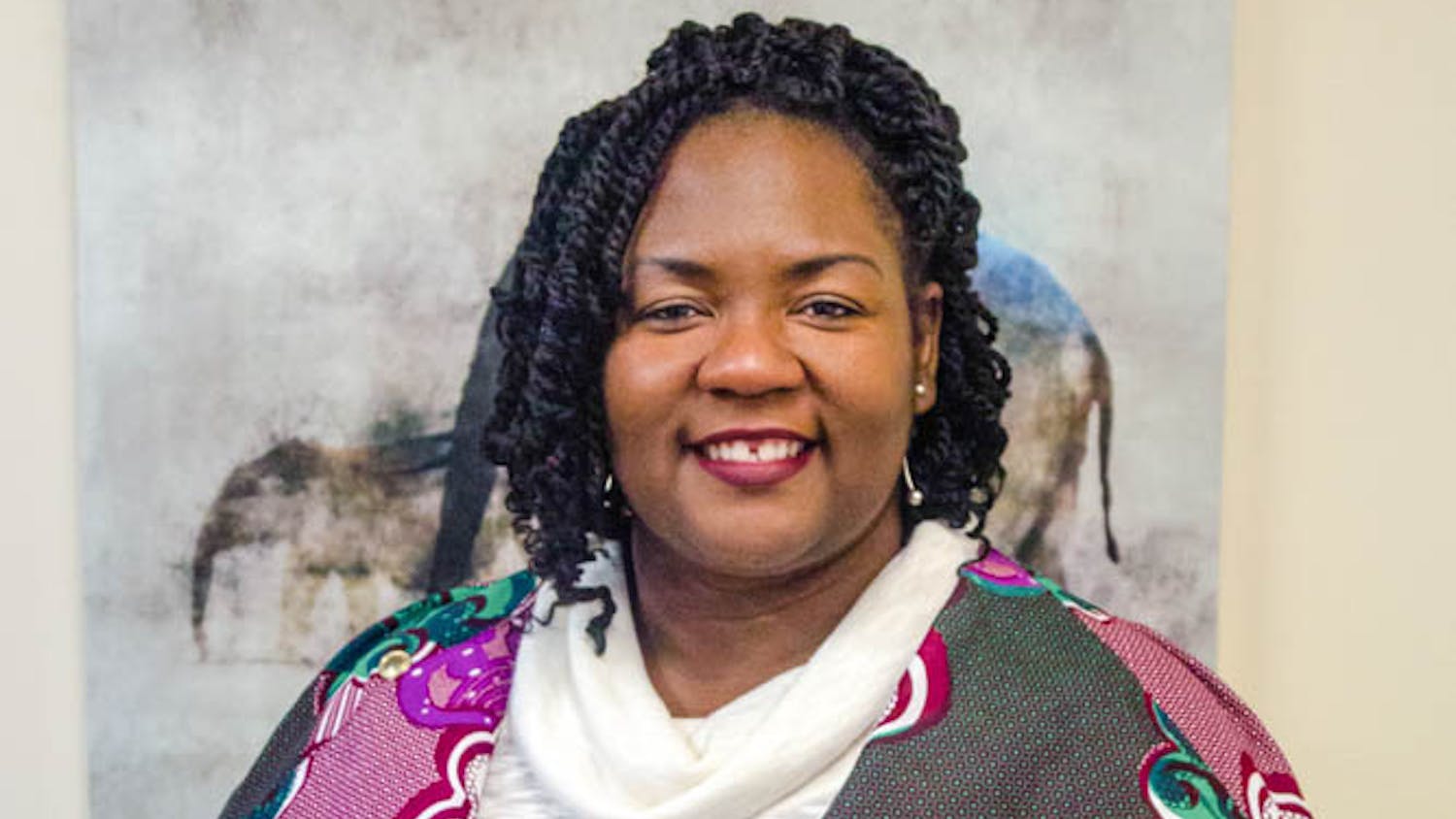A Brown Bites Guide to the events surrounding the University's publication of a draft of its diversity and inclusion action plan, "Pathways to Diversity and Inclusion: An Action Plan for Brown University."
THE PLAN
On Nov. 19 President Christina Paxson released "Pathways to Diversity and Inclusion: An Action Plan for Brown University," a working draft of the University’s plan to address diversity and inclusion on campus. The draft of the $100 million plan aims to "promote diversity and inclusion and confront the issues of racism, power, privilege, inequity and injustice that are part of the Brown experience for so many members of our campus.”
The plan includes hiring a new dean to work with first-generation and low-income students in addition to creating a center for first-generation students by fall 2016; doubling the number of faculty members and graduate students from historically underrepresented groups within the next 10 years; expanding the Center for the Study of Race and Ethnicity in America and the Center for the Study of Slavery and Justice and making these centers fundraising priorities in the BrownTogether capital campaign; and expanding education on issues central to the plan for staff and faculty members through an orientation program and workshops.
The document doesn't commit to any changes regarding the Department of Public Safety. It states that the University will "examine the need for additional diversity and sensitivity training for all officers in the Department of Public Safety."
The plan aims to spark a University-wide discussion of power, privilege, identity and structural racism with a series of lectures and workshops offered by the CSREA entitled "How Structural Racism Works."
Tricia Rose MA’87 PhD’93, director of the CSREA and professor of Africana studies, broke down the structure of the lecture series in a talk on campus in December. Each lecture focuses on one of five key facets of structural racism: housing, education, mass media, wealth and jobs and criminal justice. In the first installment of the series, she defined structural racism as the “normalization and legitimization of an array of dynamics — historical, cultural, institutional and interpersonal — that routinely advantage whites while producing cumulative and chronic adverse outcomes for people of color.”
WHAT'S HAPPENING ON CAMPUS?
Prior to the publication of the draft of the DIAP, conversations on campus about systematic racism had been building.
The Herald published two racist opinions columns in October, prompting heavy criticism by many students, including black student leaders and a collective of Asian, Asian American and Pacific Islander students. The 125th Editorial Board apologized for the publication of these articles, and a number of students, professors and administrators responded in The Herald’s opinions section.
Native Americans at Brown condemned the columns in an op-ed, also arguing for Brown’s “Fall Weekend” to be renamed “Indigenous People’s Day.” The group held a demonstration with more than 300 attendees urging the University to change the title of the weekend.
Students, faculty members and administrators demonstrated against systemic racism a month later on the Quiet Green, dressing in black to show solidarity with black students at the University of Missouri. At the demonstration, many students also spoke about racism in the Brown community. The group then marched to the Faunce steps for a teach-in held by graduate students in the Department of Africana Studies and other departments. Speakers read a list of demands.
Several days later during the Latinx Ivy League Conference, Geovanni Cuevas, a Dartmouth student and senior delegate to the conference, alleged he was assaulted by a DPS officer when trying to enter Machado House, where his host lived. Cuevas said he confronted officers after he saw them acting “inappropriately” with a Brown student at a party at Machado. The officers told him to leave, and when Cuevas re-entered the dorm through a back entrance to get to his host’s room, an officer accosted him.
“The next thing I know, when I enter the laundry room of Machado, I’m slammed against the wall and then thrown to the ground and told that I was going to be pepper sprayed. … I was also told that I was resisting, and I was obviously not,” Cuevas told The Herald.
Paxson promised to apologize to the presidents of the delegates’ home institutions and reschedule the Latinx conference. She was heavily criticized at an open forum following the incident, as well as at her talk on racial health disparities.
RESPONSES TO THE DIAP DRAFT
Students criticized the plan in many different forums, including at an Undergraduate Council of Students meeting. Students noted that only staff members with Brown email addresses were made aware of the opportunity to raise concerns and provide feedback on the plan. Students also expressed concerns that some mentoring programs will be reformed with a focus on quantity over quality and that other mentoring programs were not addressed whatsoever. International students also expressed surprise that they were not addressed in the plan.
A coalition of students released a list of demands Dec. 4, and some gathered outside of Paxson's office as part of a demonstration called the "Day of Reclamation." The demands were compiled by Asian American/Pacific Islander, black, Southwest Asian and North African and Latinx students, students with disabilities and members of Students Against the Prison-Industrial Complex.
The list of demands included disarming DPS officers, making a Diverse Perspectives in Liberal Learning course a universal requirement, adding $50 million each to the endowments of the ethnic studies program and the Department of Africana Studies and creating new concentrations to focus on traditionally marginalized identities. Demands also focused on transparency regarding collection and reporting of data; making amendments to Brown’s curriculum through the creation of new departments, centers and programs; improving University training, policies and governance; and improving campus life for students who are members of traditionally marginalized groups.
Meanwhile, 12 "tenure-stream" faculty members within the ethnic studies concentration also released a revised draft of the DIAP called the "5 Percent Plan." The plan proposed increasing the Diversity Action Plan's $100 million budget to $150 million — 5 percent of the $3-billion BrownTogether campaign.
The revised plan pushed for more faculty members from historically underrepresented minority groups and more graduate fellowships for departments looking to increase diversity. The faculty members also noted the need for professional counseling services specifically for students of traditionally marginalized groups and the disaggregation of data about faculty. The "5 Percent Plan" also expanded the list of groups the University should focus on. The plan called for a reevaluation of Brown's current curriculum, the creation of an office dedicated to Title VI, moving the Center for the Study of Race and Ethnicity in America to its own building and developing a program for Native American students similar to Harvard's Native American program.
THE FINAL PLAN
After the deadline to submit feedback was extended to Jan. 8 to provide community members an extra month to sound off on the plan, the Provost's office compiled over 720 comments on the plan. The revised plan raised funding for the DIAP from 3 percent to 5.5 percent of the $3-billion capital campaign, BrownTogether.
Major changes in the plan included shortening the deadline to double the number of faculty members from historically underrepresented groups from 10 years to between five and seven and developing a "suite of options" to offer faculty members diversity and inclusion training. The plan will also create a number of different committees and working groups such as the Diversity and Inclusion Oversight Board and the Diversity Advisory Council.
Additionally, a collective of faculty members, staff members and students will focus on updating the Diverse Perspectives in Liberal Learning course designations, and the Office of the Provost will create a Native American and Indigenous Peoples Initiative.
ADVERTISEMENT







